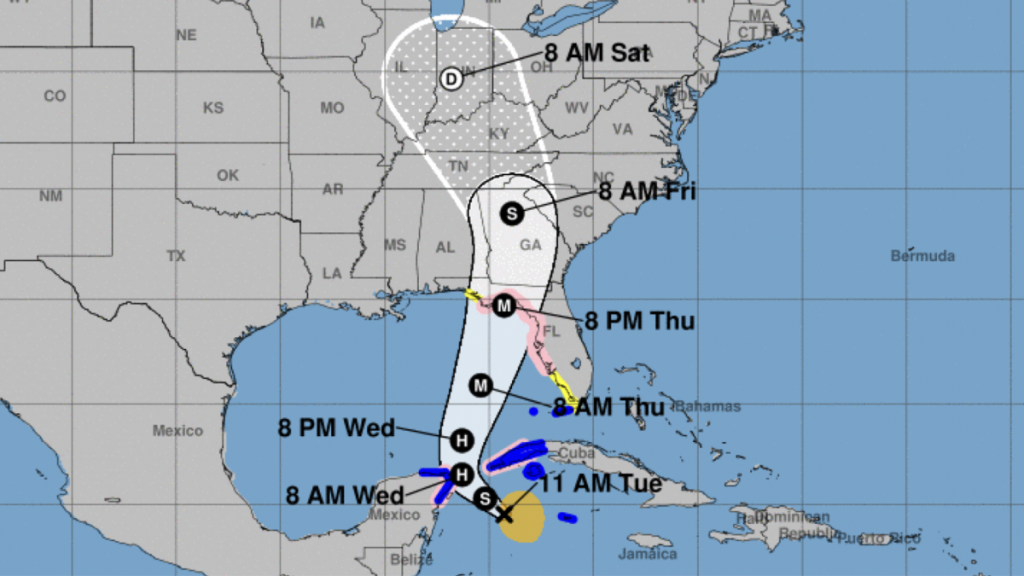As of Tuesday morning, reliable predictors were saying a roiling tropical storm called Helene just south of Cuba was on track to intensify over the coming days, and almost certainly hit Florida as a hurricane on Thursday.
Now is the time when we all love to stare at cones and “spaghetti models” showing potential paths as the storm makes its approach, but right from the jump: Please be careful about how you consume this notoriously misunderstood information.
NOAA’s cone graphic of storm Helene
According to NOAA, as of 11 a.m. ET, a Hurricane Watch is in effect for much of the Mexican state of Quintana Roo, the Cuban province of Pinar del Rio, a swath of Florida spanning “Englewood to Indian Pass,” and the densely populated Tampa Bay. In graphic form, that looks like this:

NOAA’s cone graphic of Tropical Storm Helene showing threats to parts of Mexico, Cuba, and Florida.
Credit: NOAA
As a reminder, NOAA’s cone graphic is a fairly reliable prediction of the range of paths the center of the storm may take. The cone is not — as it may appear at first glance — a prediction of an ever-widening storm exploding into the inland United States. Severe wind and storm surge can, and probably will, occur outside the cone, and some areas inside the cone will emerge from the storm totally unscathed.
Mashable Light Speed
If you’re reading this, and it turns out you end up directly in the path of a hurricane, an evacuation order will be hard to miss. At this phase, rather than speculating about whether your specific neighborhood will face the high winds and storm surge that come from a direct hit from a hurricane, in most areas it would be wiser to just heed NOAA’s broader warning:
Heavy rainfall will likely result in locally considerable flash flooding across portions of Florida, with isolated flash and urban flooding possible across the Southeast, Southern Appalachians, and the Tennessee Valley Wednesday through Friday.
Spaghetti model for Helene
Spaghetti models, like the NOAA cone model, visualize mathematical possibilities.
Unlike the cone, they present the actual paths predicted by a collection of computer models, all spilling out like spaghetti from Strega Nona’s magical pasta pot. And like the cone, the spaghetti model can be deceptive. All the paths in the spaghetti model are both speculative and contradictions of one another. The actual storm will only follow one path, and it’s almost certain that none of the predicted paths in this splatter of noodles will be perfectly predictive.
The above model, posted online by Baton Rouge meteorologist Malcolm Byron appears to show about 20 potential paths, with one particularly ominous spaghetti strand in the far east clobbering Tampa Bay directly. Such outliers should be absorbed with caution by the public.
Predicted outlier events most often do not come true. But events also don’t conform to averages of predictions. Though top weather models can be astonishingly accurate, the weather simply occurs, and its precise schema is, and will always be, totally alien thanks to the incalculable number of tiny natural and man-made factors that contribute to outcomes.


